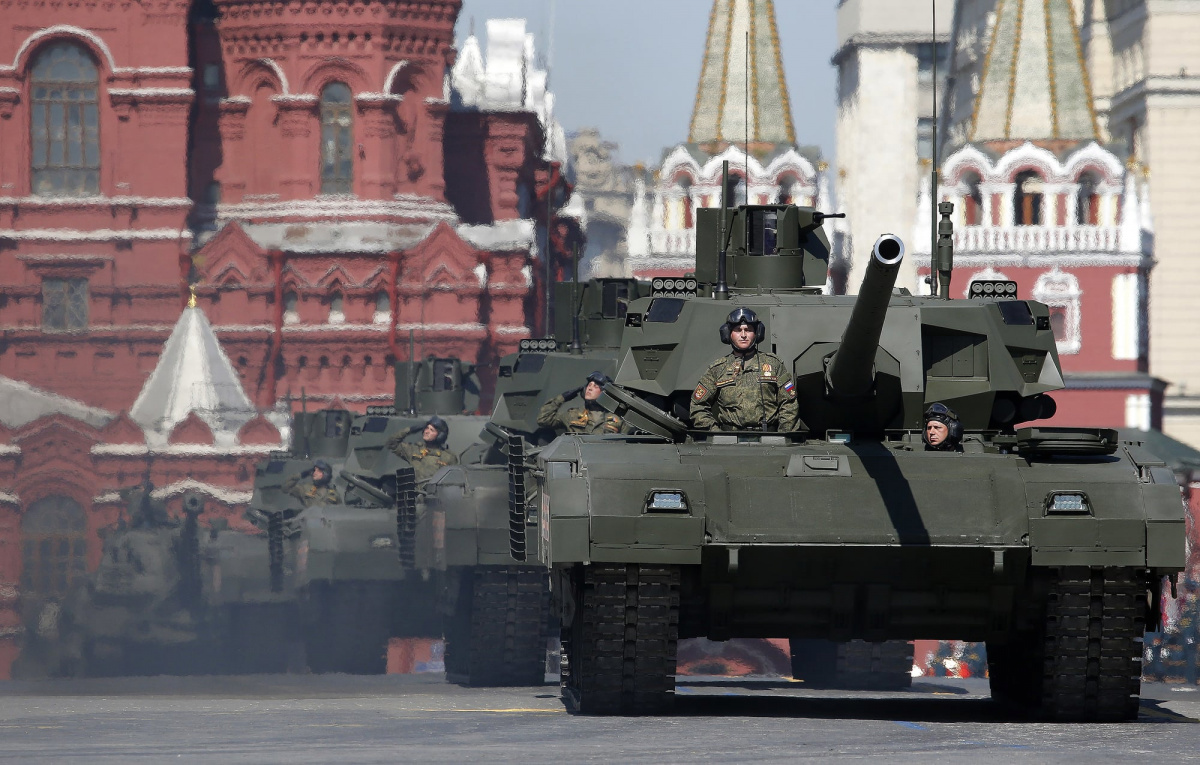BLACKEAGLE
SENIOR MEMBER
Russia tests T-14 Armata battle tank’s strike capabilities
Read news from Defence Blog at Flipboard.com | Subscribe to the newsletter from Defence Blog
Jun 21, 2017

Russian machine building company Uralvagonzavod (UVZ) started test-fired of T-14 Armata next-generation battle tanks at the Staratel test range in Nizhny Tagil.
That was reported by lenta.ru.
At Staratel test range the new main battle tanks can be tested for precision firing capabilities at targets with different stages of complexity and against a decommissioned tanks. These tests are a reliable method of assessing weapons characteristics in real time.
According to Deputy Prime Minister Dmitry Rogozin, the Russian troops will start the operational evaluation of the most advanced Armata tank from 2019.
“I hope that the Uralvagonzavod management will today confirm that the year 2019 is already the commencement of the Armata’s operational evaluation, i.e. the tank will go to military practice ranges rather than to factory testing area, which will be followed by serial production,” the vice-premier said.
The T-14 Armata is equipped with an unmanned turret and all the crew is located at the front of the hull. The new unmanned remote turret of Arama T-14 would be equipped with a new generation of 125mm 2A82-1M smoothbore gun with an automatic loader and 32 rounds ready to use.
The main gun can fire also new laser-guided missile with a range from 7 to 12 km. The T-14 Armata carries a total of 45 rounds. According to some Russian sources, the T-14 Armata could be armed in the future with a new 152mm cannon.
The first scale model of the Armata unveiled in July 2012 showed that the vehicle has a secondary weapon that could be a 57mm grenade launcher mounted on the left of the turret, and a machine gun 12.7 mm mounted on the right side.
http://defence-blog.com/army/russia-tests-t-14-armata-battle-tanks-strike-capabilities.html
Read news from Defence Blog at Flipboard.com | Subscribe to the newsletter from Defence Blog
Jun 21, 2017

Russian machine building company Uralvagonzavod (UVZ) started test-fired of T-14 Armata next-generation battle tanks at the Staratel test range in Nizhny Tagil.
That was reported by lenta.ru.
At Staratel test range the new main battle tanks can be tested for precision firing capabilities at targets with different stages of complexity and against a decommissioned tanks. These tests are a reliable method of assessing weapons characteristics in real time.
According to Deputy Prime Minister Dmitry Rogozin, the Russian troops will start the operational evaluation of the most advanced Armata tank from 2019.
“I hope that the Uralvagonzavod management will today confirm that the year 2019 is already the commencement of the Armata’s operational evaluation, i.e. the tank will go to military practice ranges rather than to factory testing area, which will be followed by serial production,” the vice-premier said.
The T-14 Armata is equipped with an unmanned turret and all the crew is located at the front of the hull. The new unmanned remote turret of Arama T-14 would be equipped with a new generation of 125mm 2A82-1M smoothbore gun with an automatic loader and 32 rounds ready to use.
The main gun can fire also new laser-guided missile with a range from 7 to 12 km. The T-14 Armata carries a total of 45 rounds. According to some Russian sources, the T-14 Armata could be armed in the future with a new 152mm cannon.
The first scale model of the Armata unveiled in July 2012 showed that the vehicle has a secondary weapon that could be a 57mm grenade launcher mounted on the left of the turret, and a machine gun 12.7 mm mounted on the right side.
http://defence-blog.com/army/russia-tests-t-14-armata-battle-tanks-strike-capabilities.html

